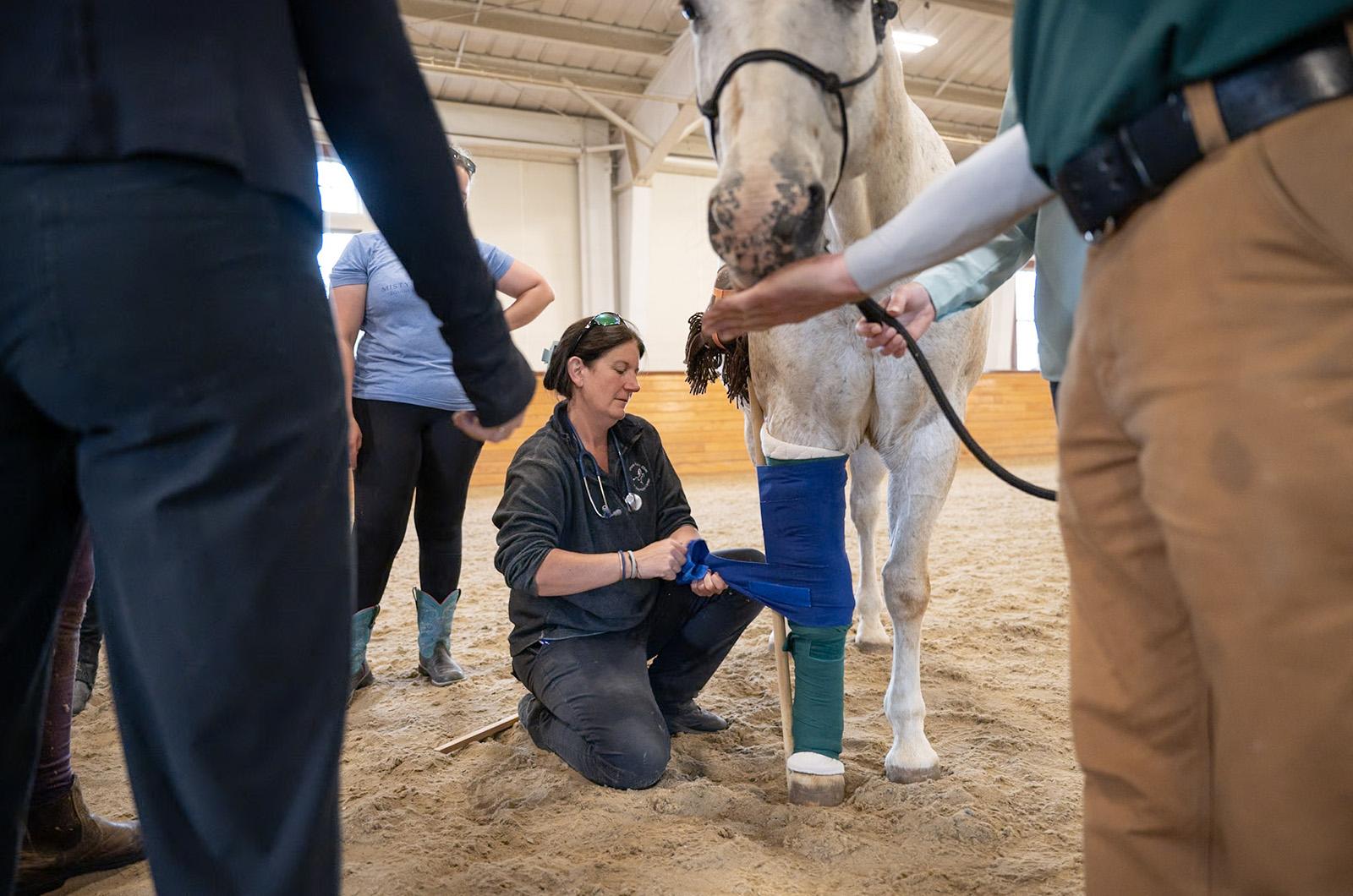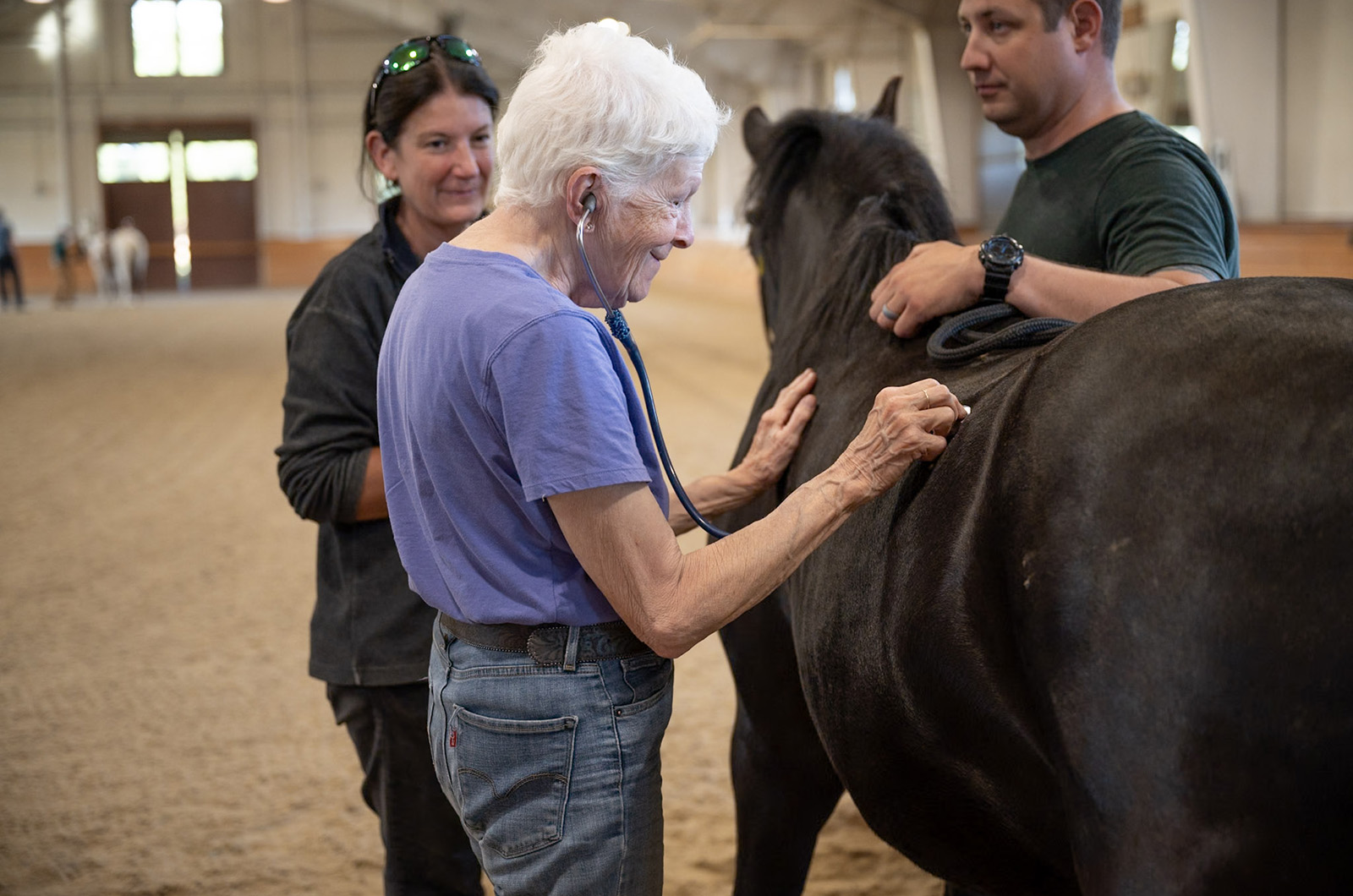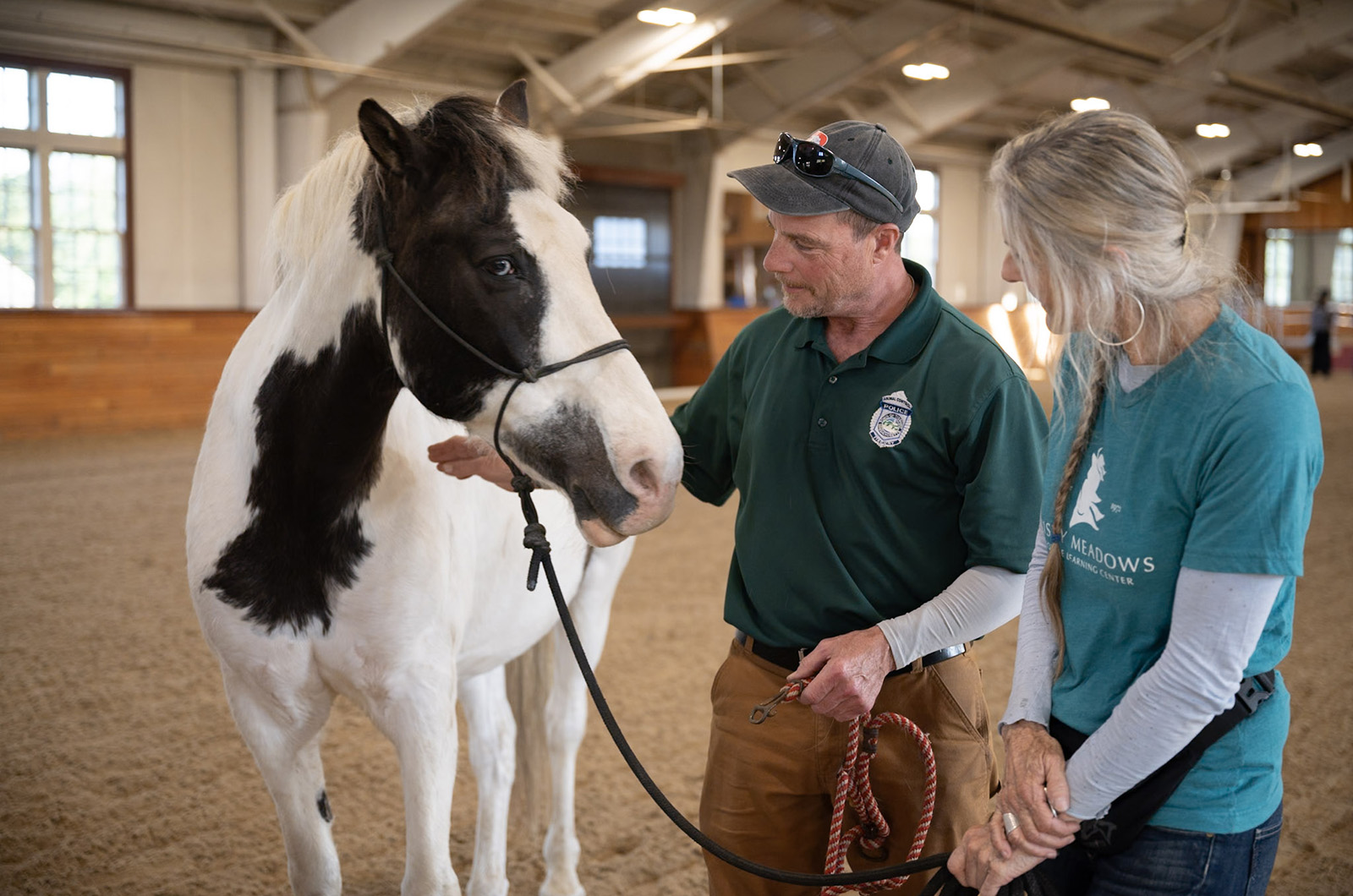At Misty Meadows Equine Learning Center, Julie Flanders tossed a hoodie over the neck a skewbald horse named Bubbles. She held the sleeves firmly, demonstrating to first responders how to use a jacket as a makeshift harness.
On the other side of the arena, participants pressed stethoscopes behind the left elbow of a horse to listen to its heartbeat and practiced wrapping leg splints on others.
Ms. Flanders, president of Martha’s Vineyard Horse Council, was one of several equine experts who had gathered at Misty Meadows Equine Learning Center Wednesday to hold a class on equine first aid and emergency response.
Veterinarian Linda Cimetti, who came from the South Shore Equine Clinic & Diagnostic Center in Plymouth, led the evening with a presentation on how to prepare for and handle equine emergencies. The class was hosted by the Large Animal Emergency Response Committee (LAERC) to help educate horse owners, riders and first responders. It is one of several actions taken by the committee to address the lack of veterinary care for horses on the Island.
Laura Plunkett, co-chair of LAERC, was also in attendance.
“We’re working on emergency preparation. Some of that is education like the first aid night,” she said. “We’ve also worked on helping first responders have the support they need to deal with this issue.”
According to Ms. Plunkett, the committee has provided the regional emergency communications center with a list of experienced horse handlers who are willing to be called during emergencies. The committee is also working to give animal control officers ‘go bags’ with supplies for equine first aid.
After demonstrating how to use a coat as a makeshift harness, Ms. Flanders handed ‘go bags’ of treats to the first responders in attendance to keep in their cars in case they have to respond to an escaped horse roaming the Island.
Tisbury animal control officer Heather Maciel stressed the importance of being prepared and ongoing fundraising efforts to make sure all of the animal control officers and as many farms as possible have veterinary supplies.
“If a horse falls and gets a really bad gash on his leg, all the animal control officers have our ‘go bag’ and we can meet the owner,” Ms. Maciel said. “We may be the first on the scene before the veterinarian gets there because that takes a bit of time.”
The money raised from last year’s first aid clinic helped the horse council buy an X-ray machine, which is kept in Ms. Maciel’s office for use by animal control officers or veterinarians. The X-rays can help determine if an animal needs to be transported to an emergency facility.
A portion of the evening was dedicated to emergency response for cat and dog owners. Veterinarian Michelle Jasny, one of the few on-Island veterinarians, gave a presentation on small animal first aid, including poison control.
The committee’s longterm goal is to bring more veterinarians to Martha’s Vineyard.
“We have a horse woman who is willing to offer free housing and free horse board to an equine veterinarian,” said Ms. Plunkett.
However, even with a housing offer, finding a veterinarian for any animal, large or small, on the Island is difficult.
“We have a veterinarian shortage,” Ms. Maciel said. “It’s a national shortage, but it really has hit home on the Vineyard.”
She said that in addition to the cost of housing on the Island, the cost of veterinary school across the country can be prohibitive.
“If you got a pet today, you could not get a veterinarian on the Island,” said Ms. Maciel. “We’re hoping that will change, but at this present moment, it hasn’t.”








Comments
Comment policy »